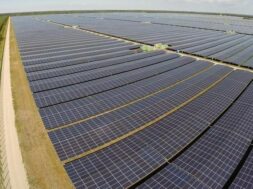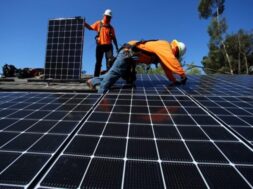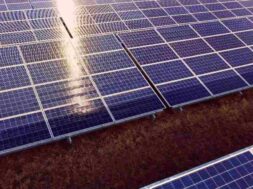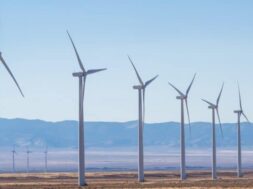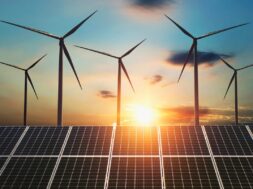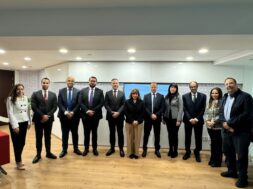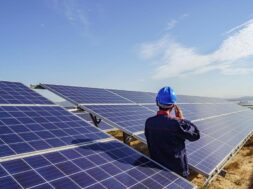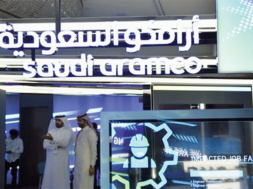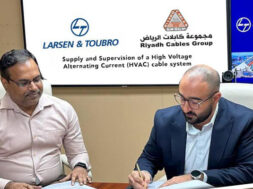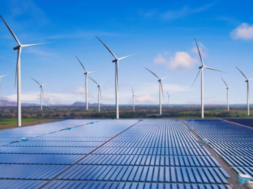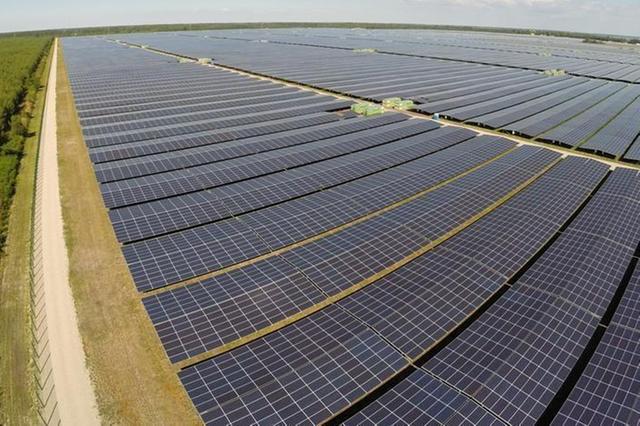
African countries are moving rapidly towards renewable energy, primarily through their abundant resource of solar. Funding for these projects is coming from a variety of sources — EU, Arab states, US, and Kenya. The size of grids ranges from mini to maxi. While our climate change concern may be focussed on the major energy users of the northern hemisphere, our planet will not remain livable without the co-operation of the southern hemisphere — particularly the emerging economies of Africa.
In Niger, OPEC has signed a major funding deal with the government to implement solar power for thousands of households in three major cities. The $25 million loan from the OPEC Fund for International Development (OFID) will be added to the $138 million package already negotiated with the Green Climate Fund.
“Our support will enable Niger to increase access to affordable, clean energy and improve the overall capacity of the power grid, which will make a real difference in people’s lives. The OPEC Fund is committed to addressing the twin challenges of energy access and climate action, and ensuring that no one is left behind,” says OPEC’s Abdulhamid Alkhalifa, the fund’s managing director.
The investment will be used to construct three solar photovoltaic power plants totalling 40 MW. Niger’s third largest city will host a 20 MW array, with a 10 MW power plant situated in Dosso and 488 kW in Diffa. 1,203 km of medium voltage and 1484 km of low voltage transmission lines will distribute the power. Grid stability will be managed by 300 medium- and low-voltage transformers.
The Nigerian electricity company will be able to connect 111,864 households and businesses, giving at least 750,000 people access to electricity. In Niger, over 80% or the population do not have a basic service.
Solar minigrids will electrify 12 villages. The project is expected to be completed by 2027.
On the Ivory Coast, a study is being conducted to examine the viability of installing a solar photovoltaic plant with a capacity of between 50 and 70 MW. Funded by Masdar from the United Arab Emirates, this solar power plant would support the climate and energy goals of the government of Côte d’Ivoire.
“Ivory Coast has committed, as part of the climate change agreements, to reduce its greenhouse gas emissions by 32% and to increase the share of renewable energy in its electricity mix to 42% by 2030,” said Minister Mamadou Sangafowa Coulibaly.
At present, gas is the main provider of electricity generation on the Ivory Coast — about 70% of it. By 2030, the government has targeted 5 GW of renewable energy, or 42% of energy needs. Côte d’Ivoire has an installed capacity of 2,369 MW today, with an interim goal of 4 GW by 2025. This will be achieved by integrating solar, hydroelectric, and biomass electricity production.
Through Masdar, the UAE aims to install 20 GW of renewable energy to supply 100 million people across Africa by 2035.
In Gambia, rural schools and health centres are being electrified using a €24 million grant from the European Union and an €8 million loan from the European Investment Bank (EIB). Negotiations took place on the sidelines of the Fifth United Nations Conference on the Least Developed Countries (LDC5), which took place from 5 to 8 March 2023 in Doha, Qatar.
“The project will transform our electricity sector by solarising 1,000 schools and 100 health centres, particularly in remote areas of the country. In addition, it will provide beneficiaries in the education and health sectors with clean and reliable energy, thereby reducing their carbon footprint,” explains Seedy Keita, Gambia’s Minister of Finance and Economic Affairs.
This project will increase the energy supply in Gambia by 20%. As part of the project, a 23 MW plant will be built in Jambur, and transmission infrastructure will also be strengthened. The funding was allocated under the Gambian government’s Renewable Energy Programme.
In Malawi, the Nkhotakhota 1 solar photovoltaic plant, which has an initial capacity of 21 MW, was recently commissioned. The Nkhotakhota solar park in the central region is a project developed by Serengeti Energy, based in Kenya, and the Phanes Group, based in Dubai, United Arab Emirates. The second phase with an extra 17 MW is expected to be online in a few weeks.
In full operation, the Nkhotakhota solar plant is expected to feed 7 GWh of electricity into Malawi’s national power grid power year. The $40 million cost of the project is coming from the US Development Finance Corporation.
Qair, a renewable energy producer based in Paris, will install four solar power plants in Mauritius. The plants, called “Stor’Sun (SS),” are equipped with battery storage systems, with a combined capacity of 60 MW. “This flexible and scalable technology allows for massive integration of renewable energy into the grid by shifting solar power generation to the evening peak demand, where traditional solar power plants do not produce,” says Qair.
Solar power plants will be installed in Trou d’Eau Douce (SS1 and SS2), Balaclava (SS3), and Petite-Rivière (SS4). Mauritius aims to produce 60% of its electricity from renewable sources by 2030. Currently, most of its power is produced from thermal coal. The high cost of fossil fuels is accelerating the move to solar across Africa.
Qair will invest $151 million into the four solar plants, due to come online next year. The company already has three solar and wind farms with a capacity of 35 MW.
Data centres in Burkina Faso and the Ivory Coast run by Orange (a subsidiary of the French company) will be powered by solar energy. Solar X supplies solar energy to commercial and industrial customers. It will now also supply Orange. SolarX will install a solar plant for the Assabou data centre in the Ivory Coast capital Yamoussokro. It is expected that this will provide 50% of the power needed to run the centre.
In Burkina Faso, 37% of the electricity needed to run the Balkuy data centre in the capital Ouagadougou will come from solar installations. “SolarX estimates that the solar systems installed in Orange’s Balkuy and Assabou data centres will reduce their emissions by 453 tonnes of CO2 equivalent per year.”
Globally, data centres using electricity produced by fossil fuels contribute about 2% to greenhouse gas emissions (similar to air travel).
Nuru Sasu (an electricity provider) develops, finances, and builds solar farms in the Democratic Republic of Congo. The $1.5 million financing is being provided by a consortium of investors. Nuru has installed the first solar minigrid in Goma — a city in the North Kivu province. The company aims to develop an installed capacity of almost 14 MW across three DRC cities.
“Nuru is delighted to have partners like REPP, Proparco and E3 Capital giving us the means to provide life-changing energy access in an extremely challenging environment,” says Jonathan Shaw, Nuru’s co-founder and CEO.
These solar minigrids will be connected over the next three years and will provide electricity to 230,000 people for the first time. 5,300 businesses and social and public institutions which currently rely on diesel-powered generators for their electricity supply will be able to access solar instead. More than 80% of the DRC population has no access to electricity, a situation found in many countries in Africa.
Nuru is developing a further 35 MW of solar generating capacity. This will diversify DRC’s electricity generation, 98% of which comes from hydroelectric facilities that are in dire need of an upgrade and are vulnerable to the droughts exacerbated by climate change.
Mini grids are spreading across Africa as part of the African Mini Grids program. Already active in Somalia and Nigeria, the program will now be implemented in Burkina Faso. The program aims to provide technical assistance for the deployment of solar mini-grids in at least 21 African countries. This will support innovation and technology transfer.
“The African Mini Grids Program will strengthen the resilience of vulnerable communities by supporting livelihoods and providing income-generating activities,” a UN spokesperson says.
Burkina Faso sees mini grids as part of the solution to the challenge of rural electrification in a country with a population of 22 million and only 22% access to power, less in rural areas (10%) where it too expensive to extend existing networks.
1.6 million euros have been provided by the Burkinabe government, UNDP, and the GEF. “With the assistance of the American research centre Rocky Mountain Institute (RMI), the Burkina Faso Rural Electrification Agency (ABER) will implement the African Mini-Grid Programme in the regions of Cascades, Boucle du Mouhoun, Centre, Centre-North, Centre-East, North and Central Plateau.”
In West and Central Africa, Afrigreen has established a Debt Impact Fund to support the energy transition of small and medium-sized enterprises by replacing fossil fuel generators with solar photovoltaic systems. 87.5 million euros have been raised from “several international financial institutions, including the European Investment Bank (EIB), the International Finance Corporation (IFC), the World Bank’s subsidiary, the Finland-IFC Blended Finance for Climate Program, and the Belgian Investment Company for Developing Countries (BIO).”
“The Afrigreen fund will be able to provide long-term local currency financing in Ghana and Nigeria through the Local Currency Financing Facility (LCF), which ‘significantly’ reduces foreign exchange risk. Through this financial mobilisation, the fund is expected to contribute to closing the financing gap for renewable energy in Africa.” Small and medium sized enterprises can save money on their electricity bills by going solar. They also reduce the carbon footprint of their operations.
The almost 300 MW of projects mentioned in this article may seem like small beans to us in the West who are used to numbers in gigawatts, but they will make a quantum difference to the people of Africa and sow the seeds of further developments. Mother Earth needs all the help it can get.
